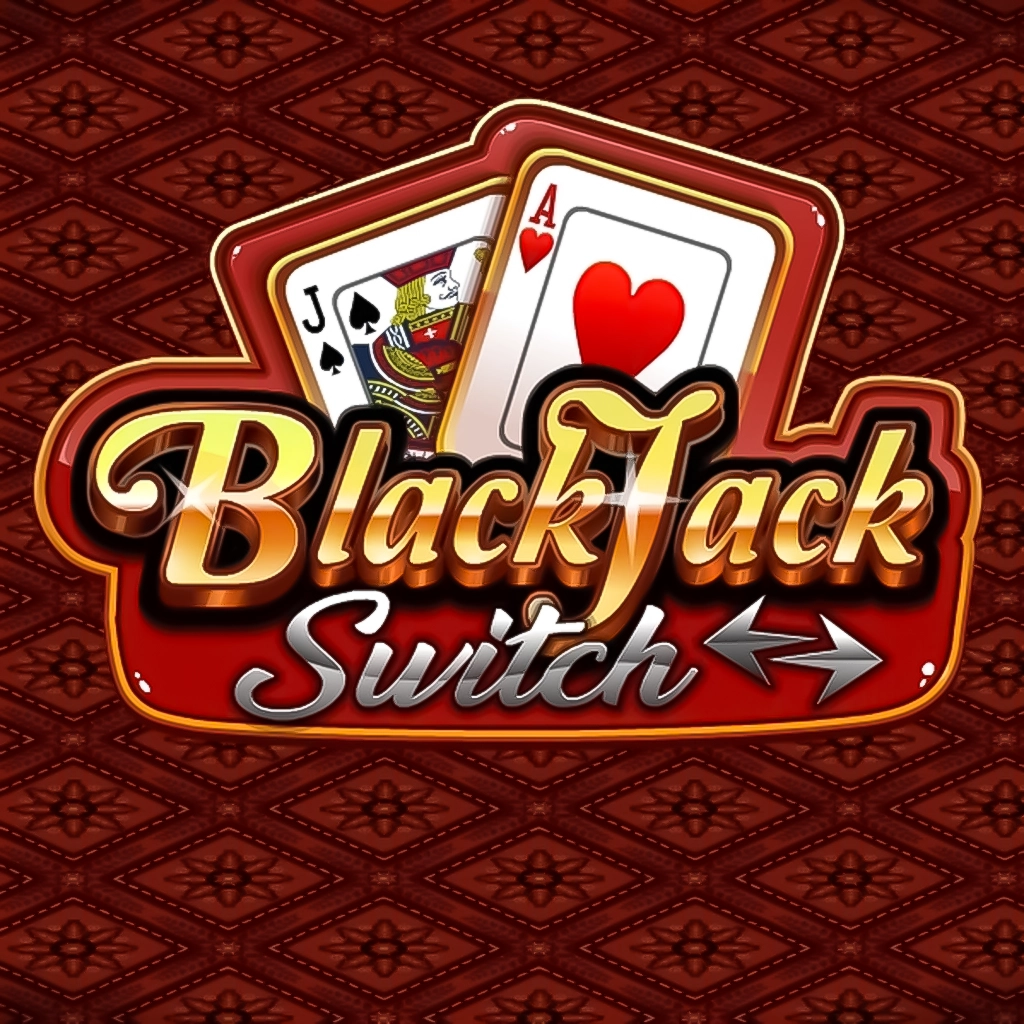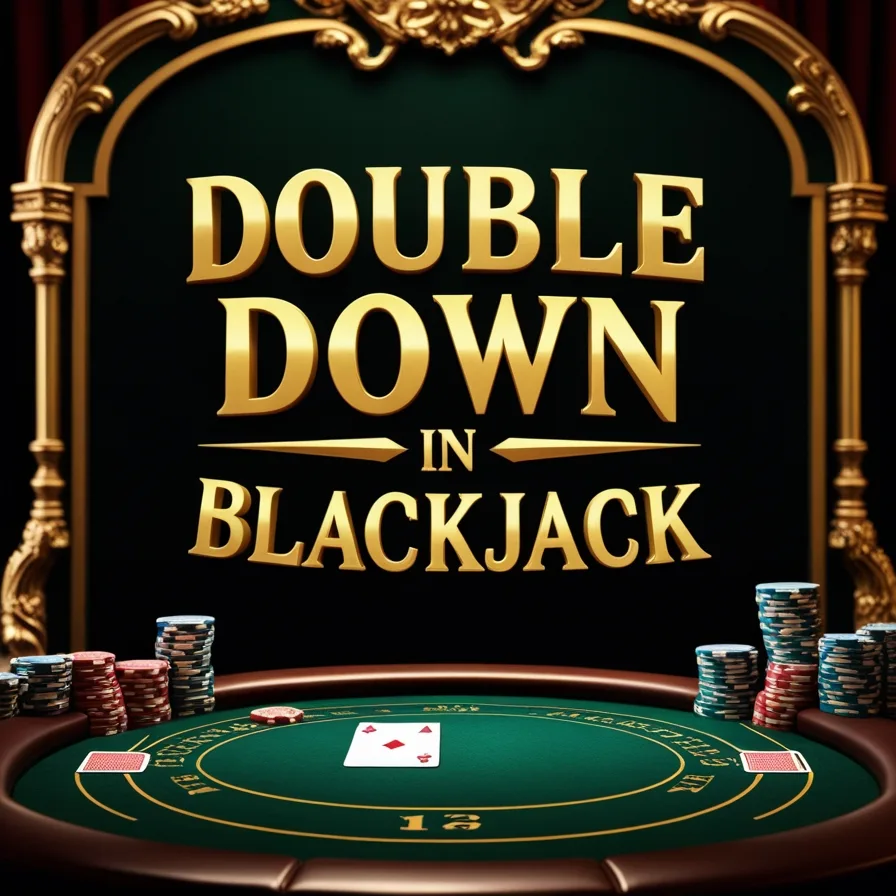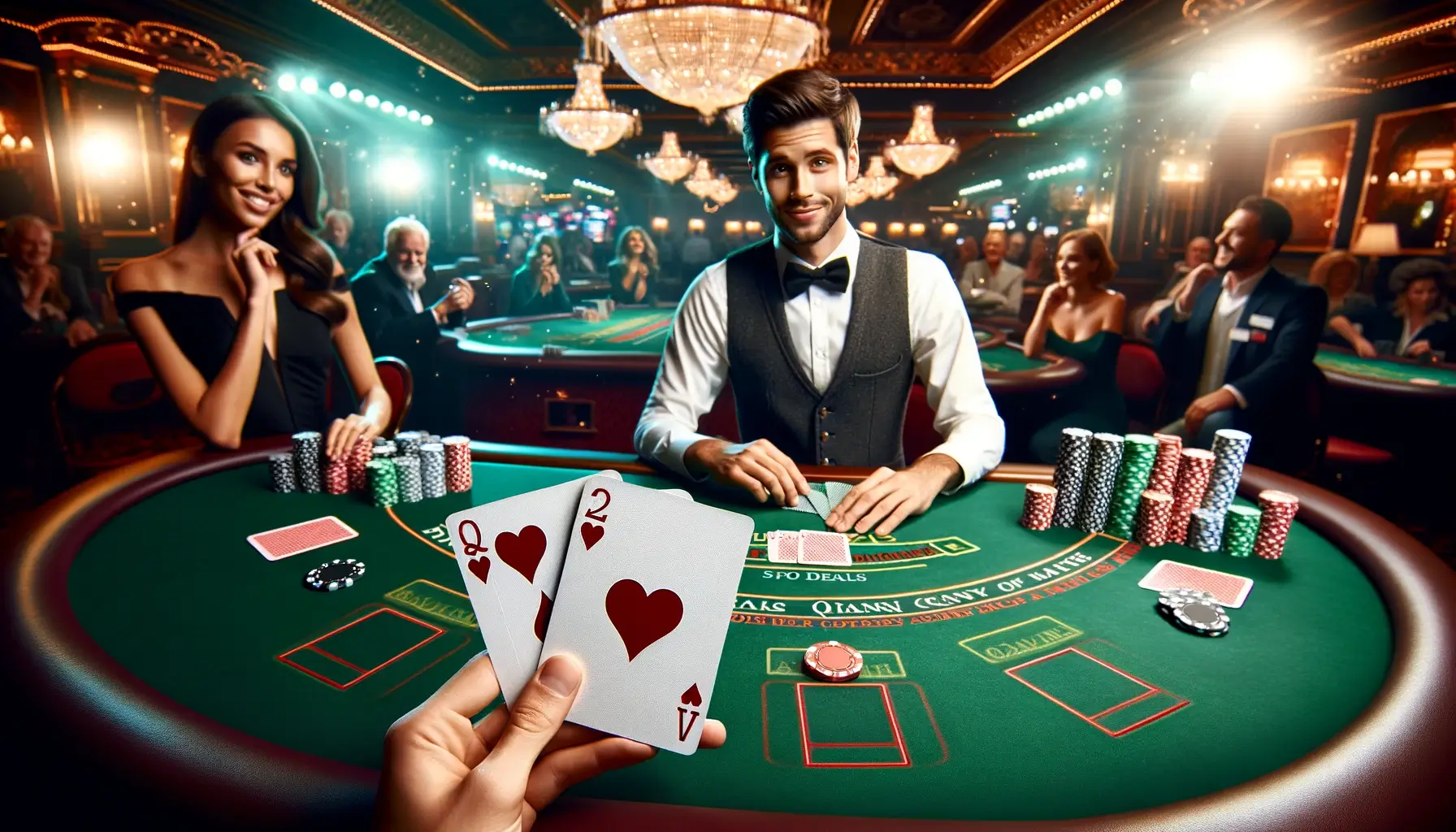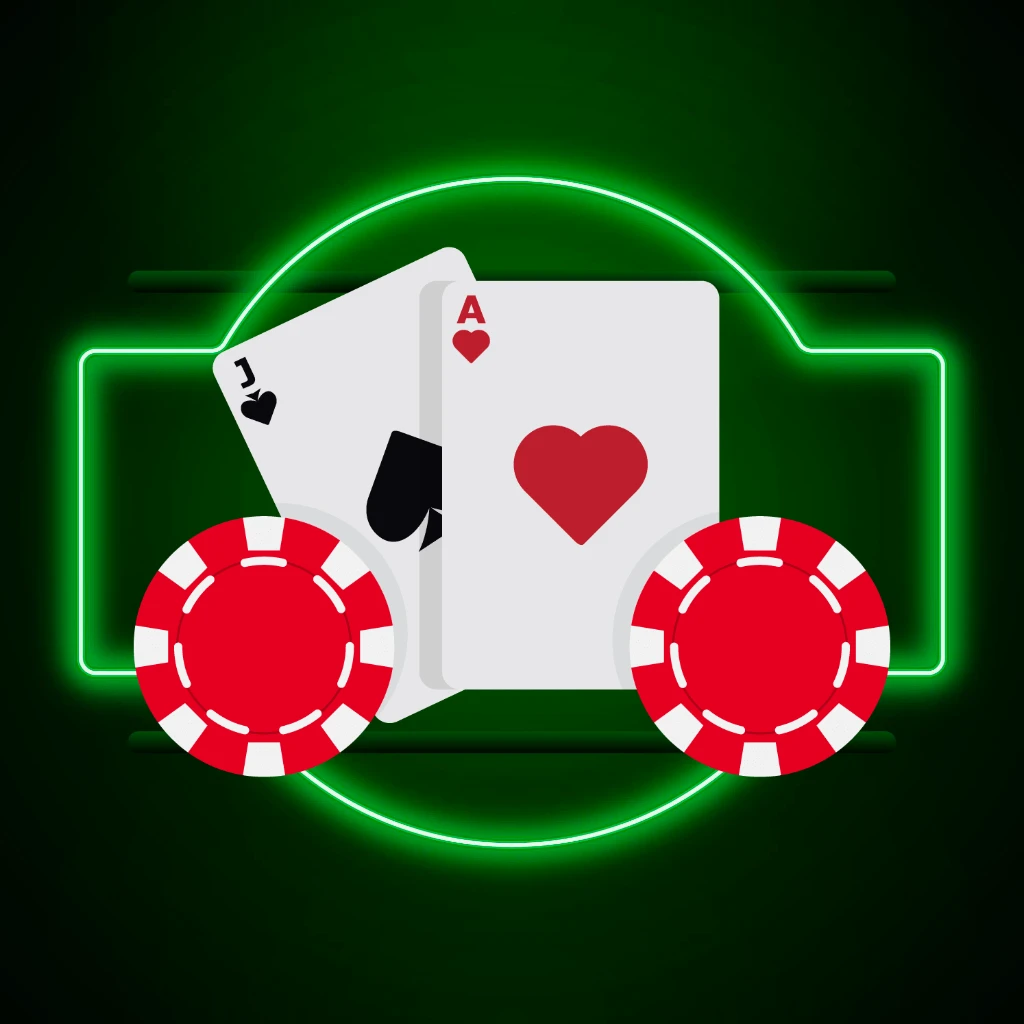European Blackjack vs American Blackjack
What is European Blackjack and Where to Play Online Blackjack?
European blackjack is a standard game version that has been played for centuries. It offers unique gameplay that shows its European roots. As in other versions, the goal in European blackjack is to get a hand value closer to 21 than the dealer without going over. Its main differences lie in the dealing rules and the number of decks used.
You can play European blackjack on various online blackjack sites, especially in the UK, France, Germany, and other parts of the continent. This version is known in many online casinos for its traditional and careful style of play, unlike the quicker real money American versions.
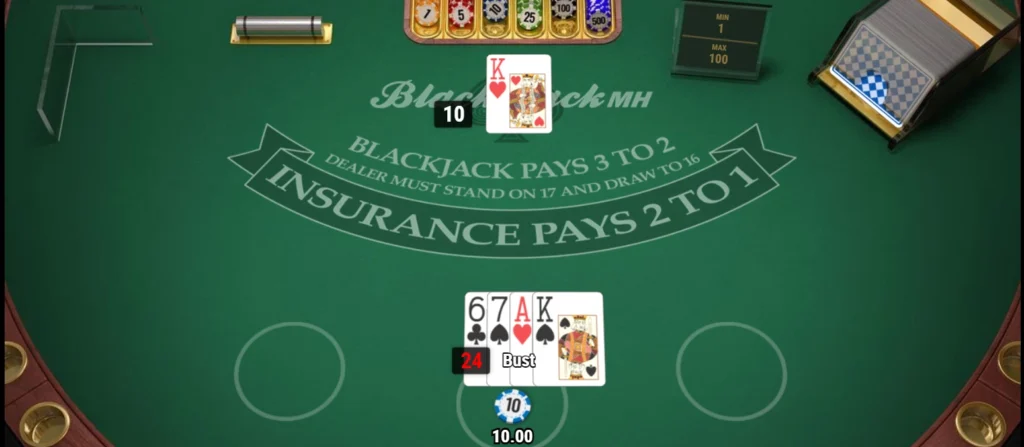
Bust in European Blackjack: Player’s hand exceeds 21 and loses the bet
What is American Blackjack?
American blackjack, also called classic blackjack, is a favourite in the U.S. More and more players play American blackjack online in Canada these days. This version has unique rules for the dealer’s hidden card, making the game more complex and strategic.
Players try to get a hand value of 21 without going over. The dealer also gets two cards right away, one face-down and one face-up. Both the dealer and players can draw more cards to get closer to 21 or choose to stand. Nowadays, many real money gamblers know about American live blackjack, how to play blackjack, and its basic strategies.
Basic Rules of European Blackjack
In classic blackjack, live dealer games, or online blackjack, the player must aim to beat the dealer’s hand without going over 21. While this is the same for all versions, there are many differences between American and European blackjack.
Here is a European blackjack review of rules that you must know before you start playing:
- Decks Used. European blackjack typically uses between 2 to 8 decks, with 6 or 8 being the most common in good online casinos. Fewer decks may slightly improve the online blackjack odds.
- Doubling Rules. Players can double down on hands valued at 9, 10, or 11 by folding their bet for one extra card.
- Splitting Rules. Gamblers can split if they get two cards of the same value. However, resplitting is often limited, especially in local casinos.
- Live Dealer Behavior. In real money European blackjack, the live dealer must stand on all 17s, whether hard or soft.
Basic Rules of American Blackjack
While European blackjack follows standard rules, American online blackjack offers many more variations, such as Atlantic City Blackjack, Las Vegas Strip Blackjack, Vegas Downtown Blackjack, Multi-Hand Blackjack, and Spanish 21.
Each real money version has its own unique features, so it’s important to learn about them to find the one that best fits your style. Let’s explore American blackjack rules with this ReviewCasino online blackjack site guide:
- Number of Decks. American live blackjack casino games typically use 6 to 8 decks, but sometimes just one deck is used.
- Doubling Rules. You can double down on any two initial cards. This adds more blackjack strategy to the casino card game.
- Splitting Rules. Players can often resplit hands, including aces, up to four hands. This rule, though, can vary between blackjack American online casinos.
- Dealer Behavior. The dealer usually hits on a soft 17, giving the house a slight edge.
Key Differences: European vs. American Blackjack
Before choosing which real money version to play blackjack online, comparing American vs European blackjack variants is essential. Their differences in rules may affect both your playing online strategy and the results. Here are the key differences.
Dealer’s Hole Card Rule
In European free online blackjack, the dealer only gets their second card after players finish their hands. So they can’t check for blackjack early. In American blackjack, the dealer immediately gets a second card and checks for blackjack if their first card is an Ace or a 10-value card.
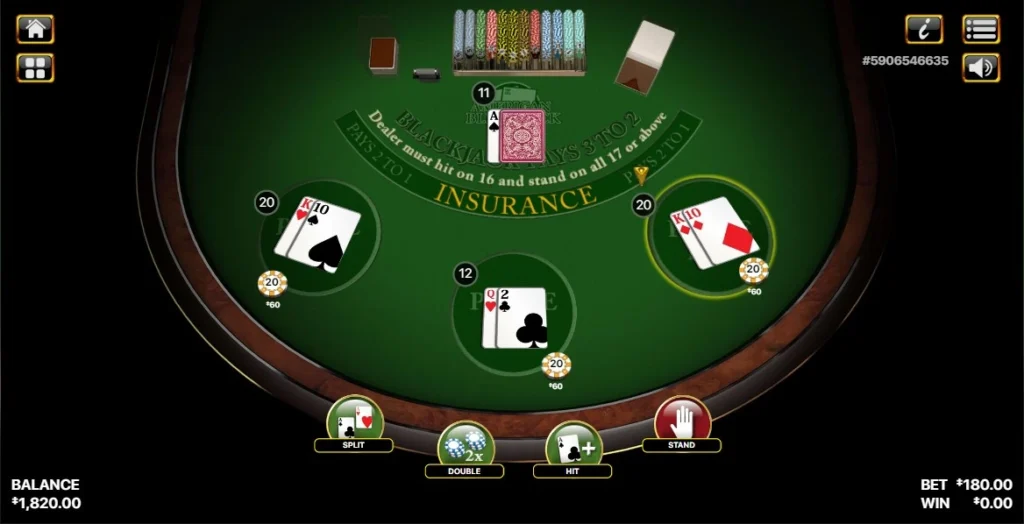
Screenshot of American Blackjack Online by Habanero
Number of Decks and Its Impact
One key difference between real European blackjack vs American blackjack is the number of card decks used. European blackjack uses two decks, while American blackjack usually has six or eight.
With fewer decks, European live blackjack makes it easier to keep track of the cards and has a lower house edge, which makes it more appealing to some players. However, many best online blackjack casinos set strict house rules to balance out this player advantage.
Doubling and Splitting Restrictions
When a player feels confident about a potentially winning hand, they can “double down,” doubling their initial bet. The rules for doubling down vary between American vs European blackjack.
In American online blackjack, players can double down on any hand value, while in European, you can only double down on hands worth 9, 10, or 11. This gives American blackjack players more betting options, whereas European ones require more skill and focus.
Online blackjack “split” lets a player divide their first two cards into two separate hands and double the bet. In real money American blackjack, you can split a hand up to three times and split any pair. In European blackjack, you can only split once, and only pairs totaling 10 (like 10s, Jacks, Queens, and Kings).
Surrender Options
American blackjack lets players “surrender” after getting their first two cards. If you think your chances of winning are low after a high bet, you can surrender and lose only 50% of your bet instead of all of it. Real money European blackjack doesn’t offer this option.
Some see surrendering as a smart way to cut losses, but others regret the quick decision when they realize later they actually had a winning hand.
House Edge Comparison
The “House Edge” displays the difference between a player’s chance of winning and the payout they get when they win. It shows the blackjack casino’s expected profit margin, not the exact amount made per game.
In real money blackjack, the house edge is typically around 1%, but it can change based on the online blackjack site, game version, and table.
House Edge in European Blackjack
European blackjack has a house edge of 0.40%, which is just 0.05% higher than American blackjack. This is still lower compared to most bets in slots, roulette, or craps.
Using the right strategy and player-friendly rules, like a single deck, surrender options, or resplitting, you can find real money online blackjack games with a house edge as low as 0.10%.
In brick and mortar casinos, your options for good odds are limited. Online casinos, on the other hand, offer over 10 different blackjack tables, making it easier to find better odds. Just be sure to choose a trustworthy real money online blackjack casino.
House Edge in American Blackjack
In standard American blackjack, the house edge is usually around 0.5%. What does this mean?
- The dealer stands on all 17s.
- Players can double down on any two cards.
- Players can split pairs, including re-splitting and hitting split aces.
- Blackjack pays out at 3:2.
However, any changes to these rules can impact the house edge. For example:
- If the dealer hits on a soft 17, the house edge increases to around 0.7%.
- If a blackjack pays out at 6:5 instead of 3:2, the house edge jumps to about 1.9%.
- Limiting double downs (e.g., only allowing them on 10 or 11) increases the house edge by about 0.1%.
- Not allowing re-splitting adds 0.1% to 0.2% to the house edge.
- Late surrender (giving up your hand after the dealer checks for blackjack) reduces the house edge by 0.07%.
- Early surrender (giving up your hand before the dealer checks for blackjack) cuts the house edge by 0.6%.
- Allowing players to double down after a split lowers the house edge by approximately 0.15%.
As you can see, even small rule changes, such as how the dealer acts on a soft 17 or limits on doubling and splitting, can greatly affect the house edge in both European and American blackjack.
Payouts in European Blackjack
Understanding the payout structure in real money European blackjack helps players optimize their winnings and make right betting choices. Let’s define the payouts for different hands:
- Natural Blackjack Payout
A natural blackjack is an Ace and a 10-value card (10, Jack, Queen, or King) that total 21. In this scenario, You win 3:2. For example, when you bet $10, it earns you $15 plus your original $10. This is $25 in total.
- Payouts for Other Winning Hands
If your hand beats the dealer without going over 21, you get paid 1:1. A $10 bet wins you $10 + your original $10 (totaling $20). If your hand ties with the dealer’s, it’s a push. You keep your bet without winning or losing.
Knowing these payouts can help you make better choices and manage your bankroll more effectively.
American Blackjack Payouts
Here’s an overview of real money payouts for hands in American blackjack:
- Natural Blackjack Payout
A natural blackjack happens when your first two cards total 21 with an Ace and a 10-value card. In American blackjack, if you get a natural blackjack, you win 3:2. So, with a $10 bet, you win $15 and keep your $10, making $25.
- Payouts for Other Hands
For non-blackjack winning hands, the payout structure is quite simple. If your hand beats the dealer’s without overreaching 21, you get paid real money. For example, if you bet $10 and win, you receive $10 in winnings plus your original $10 bet, totaling $20. If your hand ties with the dealer’s (a push), you get your original bet back.
- Insurance Bet Payout
Taking insurance in blackjack pays 2:1 if the dealer has a blackjack. So, if you bet $5 on insurance and the dealer hits blackjack, you win $10.

Screenshot of American Blackjack Online by Habanero
- Impact of 6:5 Payout Variation
Some American blackjack tables pay 6:5 for a natural blackjack instead of the usual 3:2. This change significantly affects the house edge and your potential winnings. For example, with a 6:5 payout, a $10 bet would bring you $12 instead of $15. Although it seems minor, this increases the house edge. While the house edge in a standard 3:2 game is about 0.5%, in a 6:5 game, it jumps to around 1.9%. This makes the game less favourable for players.
Strategic Considerations
Many new blackjack players think the goal is always to get a hand value of 21. Actually, the strategy depends on the dealer’s up card. If the dealer has a strong card, try to match or beat it. However, if the dealer’s card is weak, why not increase your bet? Let’s find out more about American and European blackjack basic strategy.
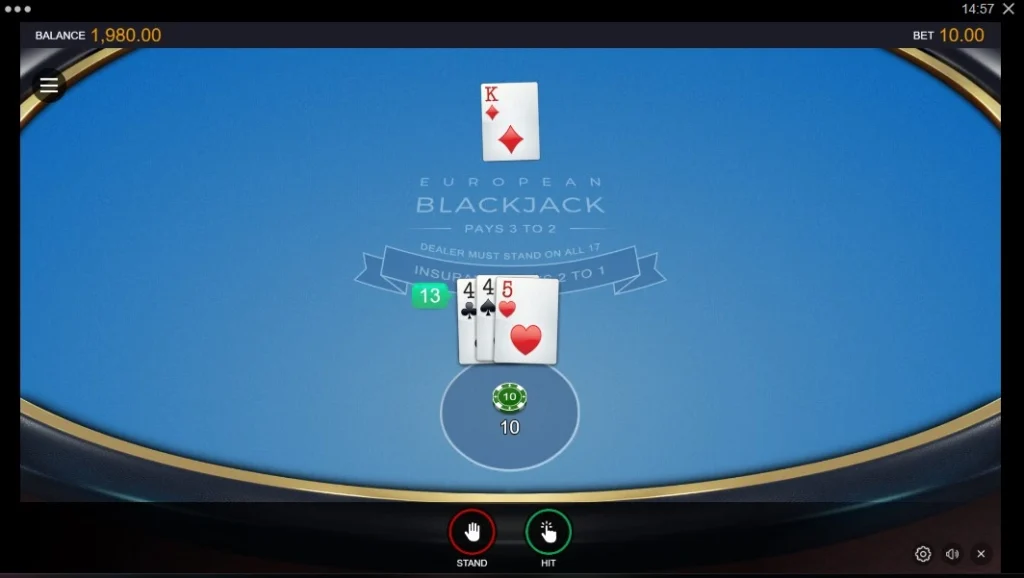
Screenshot of European Blackjack Online by Switch Studios
Basic Strategy for European Blackjack
By following this European blackjack strategy, you can make the best decisions based on the dealer’s upcard. Here’s what to do in this version of the game:
| Hard Hands (Without an Ace, or Ace as 1)
5-8: Hit |
| Soft Hands (Ace counted as 11)
13-14: Double down if dealer has 5 or 6; otherwise hit. |
| Pairs
2s and 3s: Split if dealer has 2-7; otherwise hit. |
Here are a few things to keep in mind:
- In the European blackjack game, the dealer waits until players finish their turns before checking for blackjack. This doesn’t affect the basic strategy, but it’s good to know.
- Free blackjack games usually use 2 to 8 decks. More decks slightly increase the house edge, which may impact your doubling and splitting choices.
- If resplitting and doubling options are available, use them—they lower the house edge.
Basic Strategy for American Blackjack Games
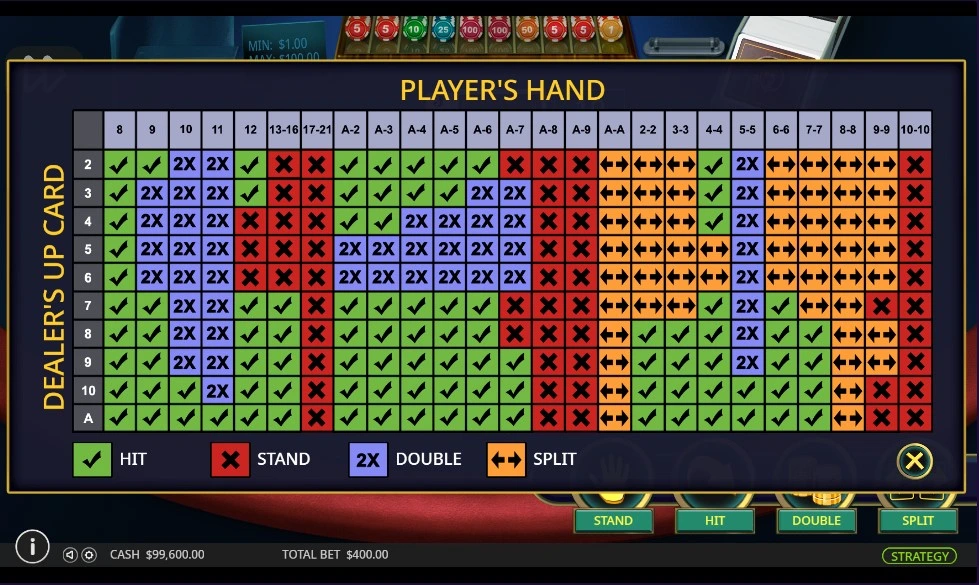
American Blackjack Stategy game menu by pragmatic Play
An American blackjack basic strategy helps you make the best moves based on the dealer’s upcard, minimizing the house edge. Here’s your guide on how to play free blackjack and learn about the American blackjack strategy:
| Hard Hands (No Ace, or Ace equals 1)
5-8: Always hit. 9: Double down if dealer shows 3-6; otherwise, hit. |
| Soft Hands (Ace counted as 11)
13-14: Double down if dealer shows 5 or 6; otherwise, hit. |
| Pairs
2s and 3s: Split if dealer shows 2-7; otherwise, hit. |
Impact of Specific Rules on Strategy
Specific rules in European and American blackjack games can affect your strategy. For example, be more cautious when the dealer hits on a soft 17. Double down less often in this situation because the dealer’s hand could improve.
More decks make card counting difficult and give the house a better edge. Adjust your doubling and splitting strategies based on the number of decks used. If early surrender is allowed, use it more often when you have a weak hand against a dealer’s strong card.
Also, always resplit and double down after splitting whenever possible, as these rules can benefit you.
Pros and Cons of European Blackjack Canada
European blackjack online Canada has lots of special casino bonuses and other perks for players. Yet, before you play European blackjack, remember some potential drawbacks:
Pros
- Friendly rules: It often has more player-friendly rules compared to American blackjack.
- Better odds: With fewer decks and more restrictions on doubling down and splitting, the house edge is generally lower, which gives you better chances to win real money.
- Mobile-Ready: Play on the go with Hellspin Casino fully optimized mobile platform.
- Easier card counting: Since it is usually played with just two decks (as opposed to six or eight in other versions), players interested in card counting will find it easier to keep track of the cards in play.
Cons
- Limited moves: These restrictions can limit your strategy options and potential for bigger wins. No surrender rule is available.
- No hole card: The dealer gets just one initial upcard, which can slow the game and add more uncertainty about the dealer’s hand.
Pros and Cons of American Blackjack
Here are some of the key benefits of playing American live blackjack games along with some downsides of this casino game version:
Pros
- Hole card rule: In American blackjack, the dealer takes a hole card along with their face-up card. If the dealer’s up card is an Ace or a 10-value card, they check for blackjack immediately before players make additional moves.
- Many betting options: Many blackjack American tables offer different betting options, like side bets for insurance, Perfect Pairs, and 21+3.
Cons
- Complexity: Learning basic strategy and when to adjust it can be challenging, especially for beginners. It requires practice and understanding of different hand situations and dealer cards.
- Table minimums: Some Canadian blackjack sites may have higher minimum bets for American blackjack. So you may need more money to play compared to other online blackjack variants.
Common Misconceptions About Best Online Blackjack Canada
Blackjack is a super popular casino game, but there are lots of myths about it. Knowing the facts can help increase your chances of winning. Let’s debunk some common misconceptions about online blackjack in Canada.
For example, assuming that the dealer always has a 10 hidden. In reality, the cards worth 10 are the Jack, Queen, King, and 10. This means 70% of the deck consists of cards that aren’t worth 10. So, the dealer has about a 30% chance of having a 10 in the hole. It’s not a great idea to base your whole strategy on this.
There’s also a common misconception that taking insurance in online blackjack is a good idea. However, experts say this isn’t always true. When you have a 20 or a blackjack, you already have a strong hand. The chances of the dealer hitting blackjack are low, so it’s usually better to skip the insurance.
Another myth is that you should never double down on soft hands. In fact, doubling down on some soft hands (like soft 16, 17, or 18) can be a great move depending on the dealer’s up card. If the dealer has a low card (like 4, 5, or 6), doubling down on a soft hand can give you a chance to improve your hand with minimal risk.
Finally, most players believe you should never split 8s or Aces. This is one of the most harmful myths. You should always split Aces and 8s, regardless of the dealer’s upcard. Splitting Aces gives you a chance to start with two strong hands, and splitting 8s helps you avoid the weak total of 16, which is one of the worst hands in blackjack online Canada games.
Which Version Should You Play? American vs European Blackjack
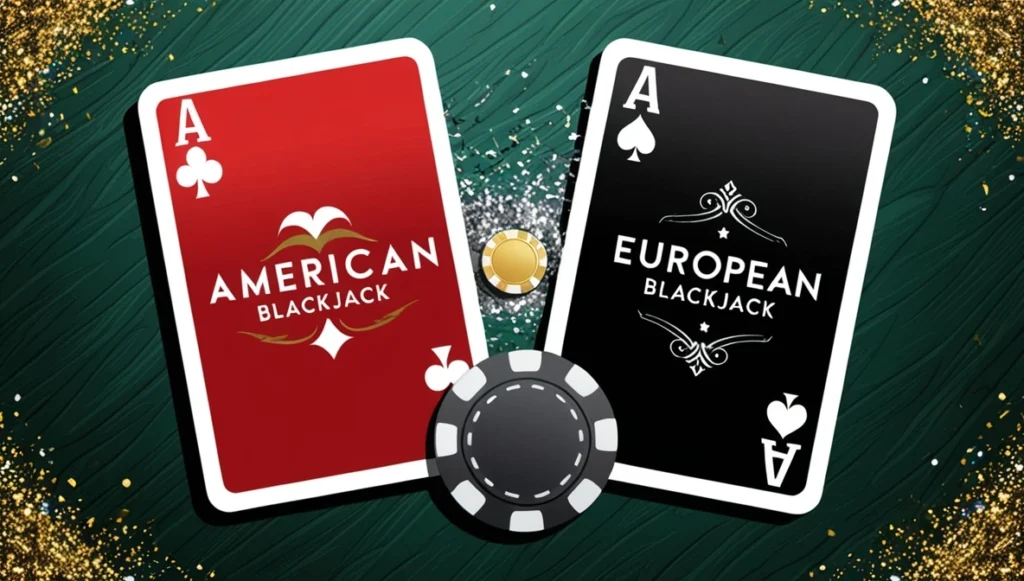
American blackjack offers many different blackjack variants. A big advantage is the hole card, which lets the dealer check for a natural blackjack before betting and helps players avoid costly mistakes.
European blackjack is simpler, using just two decks. This can lower the house edge and make card counting easier. The easy rules make it quick to learn and master, keeping it popular worldwide for centuries.
So, if you enjoy planning and bold moves, you can give American blackjack a try. For a simpler game with good wins, European blackjack would be your perfect choice.
Conclusion
Choosing between American and European blackjack ultimately depends on your preferences and playing style. Both versions offer unique experiences, so it’s worth seeing which aligns with your strategy and comfort level.
Always remember that blackjack is a game of skill but also a game of chance. Set limits on your spending, understand the rules, and never bet more than you can afford to lose. The goal is to enjoy the game, not to chase losses. Play smart, stay in control, and gamble responsibly.





